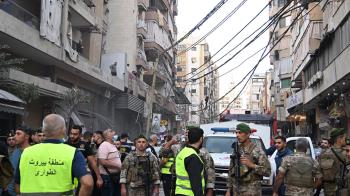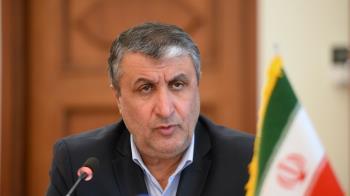Alwaght- In recent weeks, Israeli attacks on Syrian territories especially the southern parts in the vicinity of the Golan Heights have intensified. This comes as the Israeli forces have recently increased their presence in the Golan Heights following an unprecedented visit to the Syrian occupied territory on November 19 by the US Secretary of State Mike Pompeo.
But what is causing the Israelis to increase their military movement on the southern Syrian borders?
Israeli security worries on Golan front
The top cause for the Israelis to intensify their military actions in southern Syria is a concern about the Syrian internal developments and possible retaliatory strikes of the Syrian government and its allies in the Golan Heights. For a better understanding of the issue, we should know about the occupied region’s geopolitical significance.
Golan Heights have an area of about 1800 kilometers, 1200 kilometers of which were occupied by the Israeli regime during the Six-Day War with the Arab countries in 1967.
The Golan Heights’ position in southern Syria and along borders with the Israeli regime is unique. From the highest point of Golan, a large part of Syria’s south and even the capital Damascus, located 60 kilometers from northern Golan, are visible. The southern part of the Golan overlooks the Israeli territories.
This means that presence in the southern part of Golan gives an upper hand strategically to the enemy. The proof to that are the artillery attacks on the occupied territories by the Syrian forces from 1948 to 1967. The recent actions seem to signal a severe Israeli fear of the power gain of the Axis of Resistance forces in the southern regions of the Golan Heights. This gives the scared Israelis every reason to step up their air raids on southern Syria. Tel Aviv is highly afraid of the amassment of the Lebanese Hezbollah forces in Syria’s south. Al-Akhbar newspaper of Lebanon, citing Israeli research institutions, reported that Hezbollah’s risks in southern Syria for the Israeli regime have seriously increased compared to the past. The resistant Lebanese movement operates about 58 military bases in southern Syria, 28 of them hosting the movement’s southern command and 30 serve other purposes. Its bases in Quneitra and Daraa provinces are the biggest sources of Israeli worries.
This threat looks more serious if we consider the demographic makeup and position of the Israelis in the Golan Heights. Currently, 10 percent of the Israeli settlements are located in the Golan Heights, hosting 20,000 settlers. Therefore, the Israeli leaders find amassment of the resistance forces in the southern Golan Heights a threat. They are afraid that by losing the region as a result of the possible actions by Syria and other resistant camp’s forces, Tel Aviv can lose the special economic status of Golan. The region is of economic importance to the Israelis especially when it comes to its energy reserves that can add to the Israeli oil and gas wealth. This, in turn, can flag Tel Aviv as a key energy actor in the world arena.
International Golan-related pressures mount on Tel Aviv
It is not only the Syrian developments that scare the Israelis. They also face the challenge of the regional and international community’s concerns about their actions. Some examples of these challenges are here.
1. Along with Donald Trump’s defeat in the presidential election, the Israeli regime has recently sustained a heavy defeat in United Nations General Assembly special sessions. The UNGA in its December 2 session approved four resolutions on Palestine and one resolution rejecting the Israeli sovereignty over the Golan Heights. The quartet resolutions, titled “Committee on the Unalienable Rights of the Palestinian People, the Division for Palestinian Rights, Peaceful Solution to the Palestinian Cause, and Special Information Program at the Department of Global Communications”, underscored the international organizations’ responsibility to the Palestinian cause, condemnation of the settlement projects, and the need for a unilateral showdown to related issues.
Golan Heights resolution was another one approved despite Israeli and American pressures, emphasizing the Syrian sovereignty of the occupied region. In the resolution, given the UN rejection of annexation of territories using force, the continuation of the Israeli occupation of the Syrian land is blasted as a violation of the UN resolutions and chapter. It also outlaws any construction work in the Golan Heights and holds that Tel Aviv declined to implement the resolution 497, adopted in 1981.
Looking at the high levels of the global opposition to the occupation, the Israeli leaders have now obviously seen the existing threats and are strongly worried about losing Golan Heights’ special position. So, by launching airstrikes in southern Syria, they lock on preventing changes against their interests.
2. Israel's worry about US retreat from West Asia and lack of Russian support to Tel Aviv agenda. The US show of plans of withdrawing from West Asia is another catalyst to the growing Israeli operations in southern Syria.
In fact, the Americans have concluded that their presence in the West Asia region is practically impossible, while they have already begun shifting their strategy to a full-scale confrontation of China and replaced West Asia with East Asia as their region of focus.
In such conditions, the US exit from Syria in particular and from the region in general looks definite and on the other hand contrary to the unfounded propaganda of Netanyahu and the Israeli media, the Russian government and President Vladimir Putin personally are not poised to offer any security privilege or guarantees to Tel Aviv. Over the past years, Netanyahu several times traveled to Moscow and asked the Russians to establish a security wall in southern Golan Heights, the Tel Aviv regime’s security Achilles heel. Specifically, regions bordering Quneitra and Daraa were the points of the Israeli focus. The Russian response was negative, however. As a clear picture, the current Israeli status is something between frustration with Washington and ejection by Moscow.



























